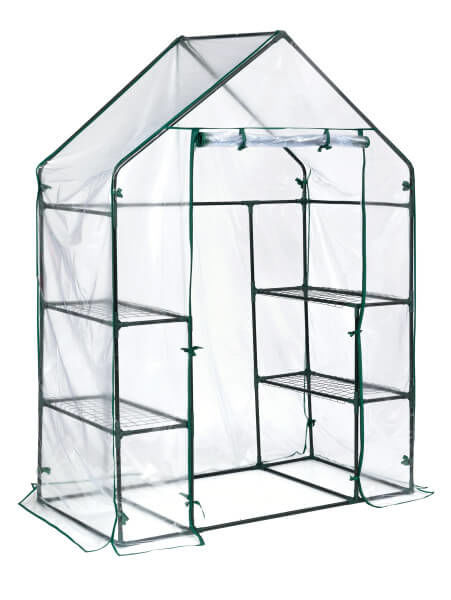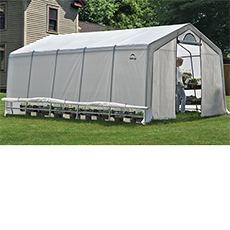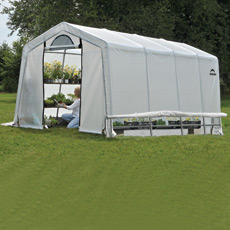Grow-It Greenhouses
Why the GrowIT Greenhouse Covers Work
- Light Transmission: The GrowIT translucent fabric is not clear like other greenhouse materials such as polycarbonate for a good reason. The translucent fabric allows a significantamount of diffused light to reach the plants, while reducing the amount of harmfulUV light. The diffused light reduces shadows and scorching to provide consistentlighting for all exposed parts of the plant, not just the tops. This means lessdamage to plants as well as reduced fungus and harmful insects.
- Insulation: The GrowIT fabric is a good thermal barrier when compared to many other cover materials. It provides good insulation for plants while preventing over-heating, which requires less water, ventilation accessories, and attention.
- Durability: The GrowIT triple-layer, heat bonded rip-stop translucent cover will outlast similar fabric greenhouse covers. Common Scrim Polyethylene covers can easily tear or puncture, and likely last one season. The easy to assemble GrowIT cover eliminates the stress points, which means the GrowIT cover can be removed at the end of the season, stored, and used again.
- Ease of Use: The greenhouses can be assembled in as little as one hour. The entire building can be moved with as little as two people as growing season demands change. The GrowIT fabric offers a balance between cold weather insulation and overheating prevention due to fluctuating temperatures. When the temperature gets warm the cover, doors, and vents can be opened to provide exceptional ventilation.
- Value: The initial cost per area covered of a ShelterLogic GrowIT Greenhouse can be as little as one-sixth the price compared to corrugated polycarbonate greenhouses. Scrim Polyethylene covers may cost as much as GrowIT covers, but will not last as long, meaning more cover replacements and cost.
GrowIT Small Greenhouse
Easy to assemble compact greenhouses
Heavy Duty Greenhouses
Heavy Duty Greenhouses
Backyard Greenhouses
Greenhouses for the backyard








